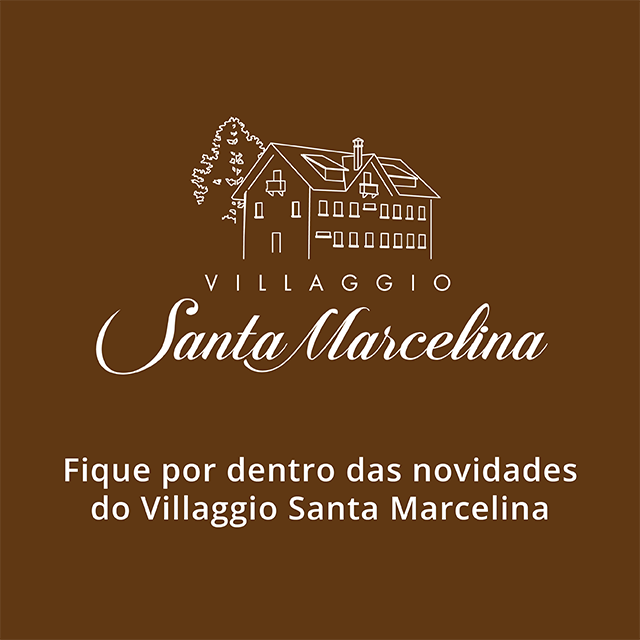Você já parou pra pensar como surgiu o termo “lua de mel”? Após uma breve pesquisa, descobri que há diversas versões sobre a origem dessa expressão. Descobri também algo que eu já imaginava: tem a ver com o calendário lunar.
A definição sobre a lua de mel que mais gostei foi a que remete à antiguidade. Dois mil anos antes de Cristo, na Babilônia, o pai da noiva oferecia hidromel ao genro, para ser consumido nos 30 dias imediatos ao casamento, quando os noivos comemoravam, só entre eles, a união matrimonial. Na época, a contagem dos dias era feita pelo calendário lunar, razão pela qual esse período de comemoração ficou conhecido como “lua de mel”. Existia a tradição de que os casais recém-casados deveriam consumir esta bebida durante o primeiro ciclo lunar após as bodas para nascer um filho varão. Daí surgiu a tradição atual da lua de mel.
Nos dias de hoje, este é um tema que demanda atenção especial de casais, antes mesmo de decidirem a data do casamento. Muitas vezes gera discussões calorosas, especialmente quando são indivíduos com gostos e preferências muito diferentes. No meu caso, hoje é quase uma decisão unilateral, pois depois de mais de 30 anos de casada e planejando incontáveis viagens de lua de mel, meu marido já me delegou esta função de olhos fechados. Ele adora embarcar na viagem sem saber muitos detalhes, além da data de partida e retorno! Não é o máximo? Eu adoro!
Nos últimos tempos minha escolha foi por viagens inusitadas. Foi pensando assim que decidimos pela viagem de navio, ou melhor um yatch-cruise. Pode parecer comum para muitos, mas como nós nunca tínhamos embarcado nessa, parti para a escolha do roteiro e da companhia marítima. Confesso que tenho certo bloqueio com hotéis de 500 quartos, imagina então navios com mais de 1000 pessoas a bordo? Descartamos essa opção e acabamos por escolher uma empresa que tem uma proposta diferenciada, super exclusiva, para no máximo 100 passageiros a bordo: a Seadream. O nome já diz tudo. Doi uma viagem divina e um sonho realizado a bordo de um iate. E a escolha do itinerário acabou sendo bem tradicional, mas passando por lugares nunca dantes navegados – Turquia e Grécia.
A Turquia me surpreendeu desde as primeiras horas, não só pelo seu povo hospitaleiro mas pela mistura do antigo com o moderno, do caos com as belas paisagens, dos palácios e histórias dos sultões e suas concubinas.
Ficamos em Istambul alguns dias antes de embarcar no cruzeiro, onde escolhi um hotel boutique no charmoso bairro de Nisantasi, o The House Hotel. A proposta, como indica o próprio nome, é que os hóspedes realmente se sintam em casa e acolhidos. Existem outros hotéis do mesmo grupo, que começou sua historia com cafés hoje espalhados por toda a cidade. Aliás, programe um dia para ir ao final da tarde ao bairro boêmio de Ortakoy, onde funciona um simpático The House Café, à beira do Bósforo. O melhor é a vista desde a sua varanda, e onde também funciona um pequeno hotel do mesmo nome. Uma ótima dica pra curtir o pôr do sol ou brunch nos finais de semana.
E a Turquia não é só Istambul, é claro. Desde que realizaram a novela das nove, Salve Jorge, a Turquia toda está mais na moda por aqui do que nunca. Tradição e modernidade ali caminham lado a lado entre heranças otomanas e bizantinas, mesquitas exuberantes, pontes imensas e paisagens arrebatadoras, como as montanhas da Capadócia ou as rotas de perfume e seda do Éfeso. A mistura perfeita de Ásia, Europa e ainda um toque de Oriente Médio. Unindo Ásia e Europa, separados pelo Bósforo, com vistas panorâmicas belíssimas, este contraste do antigo e do moderno pode ser visto na cidade antiga, Sultanahmet, com as mesquitas e palácios, e chegar no bairro de Karakoy e ver o Istanbul Modern, museu de arte moderna onde era um depósito de navios.

E foi do porto de Istambul que partimos para explorar a região, começando pelos mares Marmara e Egeu, e por fim adentrando o Mediterrâneo em um yacht elegante e casual. Todas as cabines possuem vista para o mar e oferecem o máximo de sofisticação e privacidade além da marina retrátil e os diversos equipamentos ideais para a prática de esportes náuticos. Somam-se a isso sabores esplêndidos preparados por renomados chefs e 300 rótulos de vinhos à disposição.
Entre os sete portos que paramos durante nossa viagem, os que mais gostamos foram sem dúvida Kusadasi e Bodrum, na Turquia, e Patmos e Santorini, na Grécia. A partir do porto de Kuşadası chega-se à antiga Éfeso, que foi por muitos anos a segunda maior cidade do Império Romano, apenas atrás de Roma, e onde ficava o Templo de Ártemis, uma das Sete Maravilhas do Mundo, infelizmente destruída. Passeio imperdível e que dura algumas horas já que não é tão próximo do porto. Para visitar as ruínas, eu sugiro a opção que o concierge do navio oferece. Nosso guia era ótimo e valeu muito a pena.
Outro porto na Turquia em que paramos foi Bodrum, mas lá preferimos pegar as bicicletas que o Seadream tem à disposição e fomos visitar por nossa conta o castelo de São Pedro e as ruínas do mausoléu de Halicarnasso, uma das Sete Maravilhas do Mundo Antigo. Depois paramos para almoçar em um dos diversos restaurantes charmosos da rua principal da marina, e por ali fazer umas comprinhas antes de retornar pro nosso iate. Nos anos 60 o governo turco transformou o castelo em museu para abrigar as numerosas descobertas feitas no mar Egeu, tornando-o o Museu de Arqueologia Submarina de Bodrum. Nos dias de hoje, Bodrum é um centro turístico popular para os europeus devido à sua agradável costa e animada vida noturna, recebendo centenas de milhares de turistas todos os anos.
Já na Grécia, nos surpreendemos muito com Patmos, pois não tínhamos ouvido falar dessa pequena ilha, muito charmosa e que abriga um importante mosteiro e onde o apóstolo João foi exilado entre 95 ou 96 d.C., conforme consta no livro bíblico de Apocalipse. Vivendo em uma gruta onde acreditam que ele teria recebido a revelação para escrever o famoso livro.
E Santorini é mesmo tudo aquilo e mais alguma coisa do que a gente ouve falar por ai. A ilha deve o seu nome a Santa Irene, nome pelo qual os venezianos a denominavam. A fama é digna das maravilhosas vistas e charmosos vilarejos. O mais lindo e charmoso é Oia, pronuncia-se “IA”. Lá ficamos andando por várias horas e descobrindo cada cantinho com lojinhas incríveis e igrejinhas com vistas difíceis de descrever. Cenário de filme, daqueles em que aparecem casamentos românticos no cucuruco da montanha e a noiva subindo montada em um burrinho desde o porto até a igreja.
Fiquei lá vendo aquela paisagem e sonhando casar-me novamente, mirando aquela paisagem de céu absolutamente azul e mar turquesa. Há muito que casais apaixonados decidem casar ou passar a lua de mel em Santorini. As igrejas de cúpulas pintadas de azul embelezam ainda mais a estonteante vista da “Caldeira”, lugar onde céu e mar se encontram. Tudo contribui para que sua foto saia como se fosse pintada em tela. E as casas caiadas se tornam radiantes no mais belo e inesquecível pôr do sol do mundo.
A viagem terminou em Atenas e lá nos hospedamos no New Hotel, primeiro projeto hoteleiro da dupla de premiados designers brasileiros Fernando e Humberto Campana. Faz parte do grupo Yes! Hotel e é uma pequena propriedade no centro do bairro badalado de Plaka, próximo à praça da Constituição. Tem uma uma vista estonteante do seu terraço pra Acropolis, vale conhecer.

__________________________________________________________________________________________________
Unforgettable HoneyMoon
“Live Travelling”
Text: Marisa Vianna
Have you ever stopped to think about how the term “honeymoon” arose? After a brief search, I found that there are several versions as to the origin of this expression. I also found out something I had already considered: it has to do with the lunar calendar. The definition of honeymoon I like most is the one that refers to antiquity. Two thousand years before Christ, in Babylon, the bride’s father offered mead to the prospective son-in-law, to be consumed within 30 days following the wedding, when the bride and groom would be celebrating the marriage just by themselves. At the time, the day count was made according to the lunar calendar, which is why this celebration period became known as the “honeymoon”. It was a tradition that newly married couples should consume this drink during the first lunar cycle after the wedding in order to be blessed with a child. Hence, the current tradition of the honeymoon arose.
Today, it is a term that requires special attention from couples, before deciding the wedding date. It often generates heated discussions, especially when individuals have very different tastes and preferences. In my case, today it an almost unilateral decision, because after more than 30 years of marriage and planning countless honeymoon vacations, my husband has already delegated this function with closed eyes. He loves to embark on a journey without knowing many details, other than the date of departure and return! How nice is that? I love it! Lately, my choice of travel has been unusual. In line with this thinking, we decided on a boat trip, or rather a yacht cruise. It may seem commonplace to many, but as we had never embarked on anything like this, it was left to me to choose script and the shipping company. I confess to a certain apprehension about hotels with 500 hotels, so imagine ships with more than 1,000 people aboard!
Discarding this option, we ended up choosing a company that has a different approach that is super-exclusive with a maximum of 100 passengers: Seadream. The name says it all. Take a divine journey and a dream come true aboard a yacht. The choice of the itinerary turned out to be very traditional, but also passed through places never sailed before – Turkey and Greece. Turkey surprised me from the outset, not only for its friendly people but also for the mixture of the old with the new, the chaos with the beautiful landscape, palaces and stories of the sultans and their concubines. We stayed in Istanbul a few days before boarding the cruise, and we chose a boutique hotel in the charming district of Nisantasi, The House Hotel. The general idea, as indicated by its name, is that guests really feel at home and welcome. There are other hotels in the same group, which began their history as cafes and are scattered throughout the city. In fact, you should schedule some time to go one evening to the bohemian neighbourhood of Ortakoy, where you will find The House Café, on the edge of the Bosphorus. The best thing is the view from the balcony, and where there is a small hotel of the same name.
A great tip is to enjoy the sunset or brunch on weekends. Moreover, Turkey is not just Istanbul, of course. Since the broadcast of Salve Jorge, Globo’s popular and highly acclaimed evening soap opera, everything Turkish is more fashionable than ever here in Brazil. Tradition and modernity go hand in hand between the Ottoman and Byzantine heritage, lavish mosques, bridges and the expanse of the sweeping landscape such as the Cappadocia mountains or the perfume and silk routes of Ephesus. A perfect blend of Asia, Europe and even a touch of the Middle East. Uniting Asia and Europe, separated by the Bosphorus, with beautiful panoramic views, this contrast of old and new can be seen in the old city of Sultanahmet, with mosques and palaces. Travel to the Karakoy neighbourhood and see the modern Istanbul in the Museum of modern Art that used to be shipping warehouse. It was from the port of Istanbul that we set out to explore the region, starting with the Marmara and Aegean seas, and finally entering the Mediterranean on an elegant and relaxing yacht. All cabins have sea views and offer the ultimate in sophistication and privacy beyond the retractable marina and the various equipment ideal for water sports. Add to this the splendid flavours prepared by renowned chefs and 300 wine labels available.
Among the seven ports we visited during our journey, those we like most were undoubtedly Kusadasi and Bodrum in Turkey, and Patmos and Santorini in Greece. From the port of Kuşadası one arrives at ancient Ephesus, which was for many years the second largest city of the Roman Empire, after Rome itself, and where the Temple of Artemis was one of the Seven Wonders of the Ancient World, now, unfortunately, ruined. An unmissable tourist attraction that lasts a few hours since it is not so close to the port. To visit the ruins, I would suggest taking the option that the ship concierge offers. Our guide was great and well worth it.
Another port in Turkey where we stopped was Bodrum, but there we preferred to take the bikes that Seadream has available and we visited the castle of St. Peter and the ruins of Mausoleum at Halicarnassus, another one of the Seven Wonders of the Ancient World. Later, we stopped for lunch at one of the many charming restaurants in the main street of the marina, and did a little shopping there before returning to our yacht. In the ‘60s the Turkish government turned the castle into a museum to house the many discoveries made in the Aegean Sea, making it the Bodrum Museum of Underwater Archaeology. Today, Bodrum is a popular tourist spot for Europeans because of its pleasant coast and lively nightlife, receiving hundreds of thousands of tourists every year.
Patmos in Greece surprised us, because we had not previously heard of this very charming little island, home to an important monastery and where the apostle John was exiled between 95 and 96 AD, as recorded in the Book of Revelation. Living in a cave, they believe this is where he would have received the revelation to write the famous book.
Likewise, Santorini is really everything and more of what we had heard. The island owes its name to Santa Irini, named by the Venetians. The wonderful views and charming villages are worthy of its fame. The most beautiful and charming is Oia, pronounced “IA”. There were walked for several hours and discovered every corner with great shops and little churches and views that are impossible to describe. Like a scene from a movie that shows romantic weddings on mountaintops and the bride sitting on a donkey riding from the port to the church. I was there seeing that landscape and dreaming to get married again, looking at an absolutely blue sky and turquoise sea. There is so much that Santorini has to offer for loving couples that decide to get married or spend the honeymoon there.
The churches with their blue painted domes further embellish the stunning view of the “caldera”, where the sky meets the sea. Everything contributes to making your photo come out as if it were painted on canvas. Also, the whitewashed houses become radiant in some of the most beautiful and unforgettable sunsets in the world. The trip ended in Athens and there we stayed at the New Hotel, the first hotel project of award-winning Brazilian designers Fernando and Humberto Campana. It is part of the Yes! Group. The hotel is a small property in the heart of the fashionable Plaka district, near Constitution square. It offers breath-taking, panoramic views from its terrace towards the Acropolis, which is really worth experiencing.
Para uma lua de mel dos sonhos confira as agências de viagem e hotéis que a Inesquecível Casamento indica no Guia de Fornecedores.












